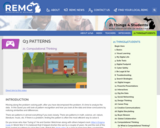
Students learn to recognize patterns to solve a problem
- Subject:
- Education
- Educational Technology
- Material Type:
- Activity/Lab
- Provider:
- REMC Association of Michigan
- Provider Set:
- 21 Things 4 Students
- Date Added:
- 08/03/2021

Students learn to recognize patterns to solve a problem
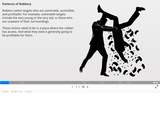
Patterns of Robbery Slideshow
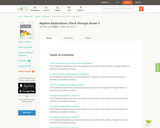
CK-12 Algebra Explorations is a hands-on series of activities that guides students from Pre-K to Grade 7 through algebraic concepts.

Short pieces of chenille stem arranged inside a box look like a random jumble of line segments—until viewed in the proper perspective.
Note: This activity is detail oriented and time intensive. It’s done by threading a long length of fishing line through twenty small holes, and then attaching short pieces of chenille stem to create a suspended pattern. When you look through a viewing hole, that random-looking pattern resolves into the form of a chair. If you think being a watchmaker is something you’d hate, then you might want to rethink doing this Snack!

In this video segment from Cyberchase, Matt tries for a second time to arrange tables and chairs to accommodate 20 workers.

Matt's third table arrangement helps fit all 20 workers at five tables in this video segment from Cyberchase.
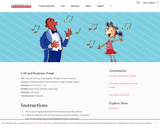
Students explore call and response songs through singing.
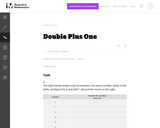
This task engages students in thinking about number patterns.
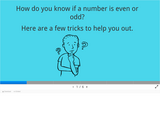
Students will be able to differentiate between an even or an odd number
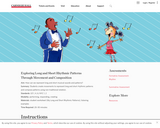
Students create movements to represent long and short rhythmic patterns and compose patterns using non-traditional notation.
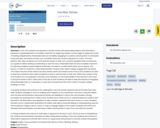
In this unit, students are exposed to familiar stories with predictable patterns and illustrations. Exposure to predictable texts is incredibly important for beginning readers as they begin to explore the world of reading independently. Predictable texts are incredibly engaging for students, allowing them to anticipate words, phrases, and events on their own and better follow the storyline sequence of a story. The story patterns also allow students to try and read the stories on their own, using the repetitive texts and pictures as a guide for either reading or pretending to read the story. Predictable texts are also incredibly important for exposing students to phonological awareness concepts in context, particularly rhyme, rhythm, and fluency. In order for students to reap these benefits, however, they need to deeply engage with the stories. This means that the stories need to be read, reread, retold, and reread some more so that students are able to build the confidence they need to pretend to read or read the text on their own. Within the context of this unit, students are only exposed to the text once; therefore, it is the responsibility of the teacher to find ways to bring the stories to life in other parts of the day so that students are able to reap the rewards of engaging with predictable texts or, if necessary, to slow down the pacing of the unit in order to include multiple readings of a text.In reading, students will continue to be challenged to ask and answer questions about the texts they read daily. Students will begin to work on retelling what happens to the characters in the story, using key details from the text and illustrations. Because the stories are repetitive in nature, this unit provides a strong foundation for teaching how to retell a story. Another focus of this unit is on understanding how authors and illustrators use illustrations and repetition to help a reader understand the main events in a story. Students will learn how to closely'read' illustrations for subtle clues about character feeling or foreshadowing clues for what is going to happen next in a story. In order to engage deeply in the content, students will continue to develop active participation and discussion habits, allowing them to learn from and with one another.In writing, students will continue to write daily in response to the text. In Unit 1, the focus was on establishing the routines and procedures necessary for daily writing about reading. In this unit, students will continue to write daily in response to the text with a focus on using words and pictures to correctly answer the question.
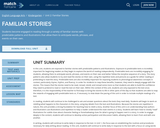
In this unit, students are exposed to familiar stories with predictable patterns and illustrations. Exposure to predictable texts is incredibly important for beginning readers as they begin to explore the world of reading independently. Predictable texts are incredibly engaging for students, allowing them to anticipate words, phrases, and events on their own and better follow the storyline sequence of a story. The story patterns also allow students to try and read the stories on their own, using the repetitive texts and pictures as a guide for either reading or pretending to read the story. Predictable texts are also incredibly important for exposing students to phonological awareness concepts in context, particularly rhyme, rhythm, and fluency. In order for students to reap these benefits, however, they need to deeply engage with the stories. This means that the stories need to be read, reread, retold, and reread some more so that students are able to build the confidence they need to pretend to read or read the text on their own. Within the context of this unit, students are only exposed to the text once; therefore, it is the responsibility of the teacher to find ways to bring the stories to life in other parts of the day so that students are able to reap the rewards of engaging with predictable texts or, if necessary, to slow down the pacing of the unit in order to include multiple readings of a text.
In reading, students will continue to be challenged to ask and answer questions about the texts they read daily. Students will begin to work on retelling what happens to the characters in the story, using key details from the text and illustrations. Because the stories are repetitive in nature, this unit provides a strong foundation for teaching how to retell a story. Another focus of this unit is on understanding how authors and illustrators use illustrations and repetition to help a reader understand the main events in a story. Students will learn how to closely “read” illustrations for subtle clues about character feeling or foreshadowing clues for what is going to happen next in a story. In order to engage deeply in the content, students will continue to develop active participation and discussion habits, allowing them to learn from and with one another.
In writing, students will continue to write daily in response to the text. In Unit 1, the focus was on establishing the routines and procedures necessary for daily writing about reading. In this unit, students will continue to write daily in response to the text with a focus on using words and pictures to correctly answer the question.

The First Grade Elementary Framework for Science and Integrated Subjects, Sky Explorers uses observation of the sun and moon in the sky as a phenomena for exploring patterns of objects in the sky.

Students use decomposition to collect data and learn multiple ways to visually represent the data they collect.

The CyberSquad tries to figure out how Hackerë_í__ cyberfrog moves when its various buttons are pressed, in this video from Cyberchase.

Students explore the relationship between input and output values and learn to use algebraic expressions and equations.
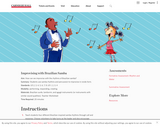
Students use samba rhythms and percussion to improvise in rondo form.

Students will determine whether each group has an even or odd number.
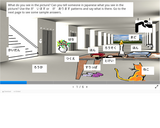
Japanese what do you see in the picture vocabulary activity
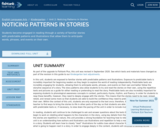
In this unit, students are exposed to familiar stories with predictable patterns and illustrations. Exposure to predictable texts is incredibly important for beginning readers as they begin to explore the world of reading independently. Predictable texts are incredibly engaging for students, allowing them to anticipate words, phrases, and events on their own and better follow the storyline sequence of a story. The story patterns also allow students to try and read the stories on their own, using the repetitive texts and pictures as a guide for either reading or pretending to read the story. Predictable texts are also incredibly important for exposing students to phonological awareness concepts in context, particularly rhyme, rhythm, and fluency. In order for students to reap these benefits, however, they need to deeply engage with the stories. This means that the stories need to be read, reread, retold, and reread some more so that students are able to build the confidence they need to pretend to read or read the text on their own. Within the context of this unit, students are only exposed to the text once; therefore, it is the responsibility of the teacher to find ways to bring the stories to life in other parts of the day so that students are able to reap the rewards of engaging with predictable texts or, if necessary, to slow down the pacing of the unit in order to include multiple readings of a text.